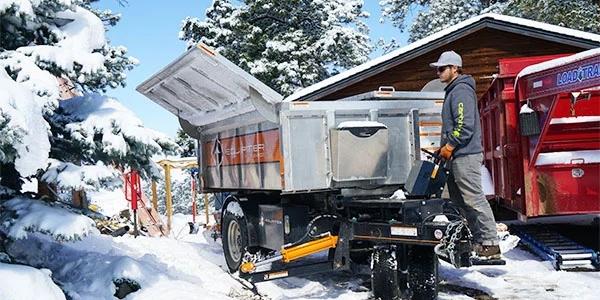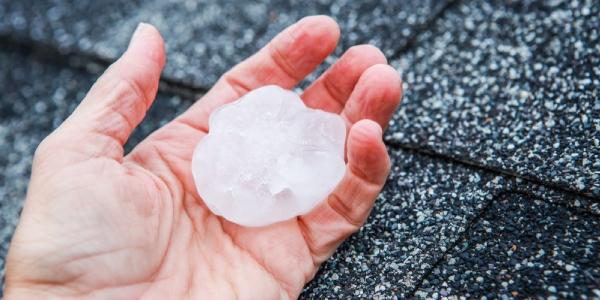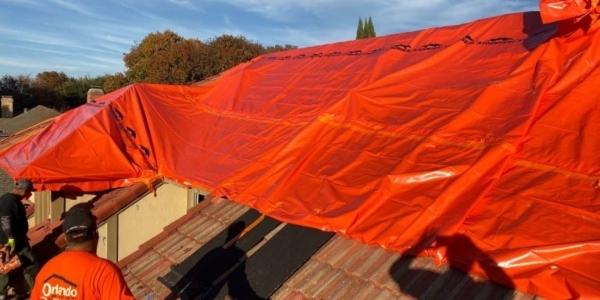Roofing in a winter wonderland: A guide to cold installation

By Polyglass.
During the brisk winter months, a unique set of challenges and considerations arise for roofing professionals.
Those in the roofing industry understand the complications associated with cold-weather installation. Polyglass shares the common concerns installers often face in cold weather environments and offers products and solutions to roofers who deal with the cold to help them extend their roofing season through the winter. This way, installers can continue what they do best all year long!
What is “cold weather” anyway?
If we posed this question to 100 random people across the country, we would likely get dozens of differing and subjective responses. However, from an industry perspective, cold weather challenges begin when ambient temperatures fall below 50°F.
While frigid temperatures are more common in the Northern states than in the South, installers working in the Southern states are not immune to colder-weather struggles, especially when using products and materials that aren’t necessarily well suited for nippier weather conditions.
Common colder weather challenges
Typical considerations for cold-weather roofing applications include choosing a permanent or temporary solution, best practice for handling and storing material, adequately preparing the substrate for product application and the type of products to use that will hold up during and after installation.
- Temporary or permanent fixes – Often, the first decision on any roofing project is whether the work planned is a permanent or temporary solution; this is especially relevant when working under less favorable conditions. Here, installers need to decide if it is worth waiting for warmer weather before executing a more permanent repair.
- Substrate conditions and preparation – As air temperatures drop, so do surface temperatures. Under certain conditions, the surface temperatures of the substrate can be colder than the ambient air. Not handled carefully, primers and adhesives may not dry or cure correctly before product application, resulting in poor adhesion and potential failure.
- Material handling and storage – Cold weather does not only affect the substrate and environment in which installers have to work; improperly storing and handling roofing and waterproofing products can significantly impact their ease of installation. Products stored in a climate-controlled environment fare better than those exposed to freezing temperatures. Improper storage – leaving products out in the cold overnight or storing them on-site – can make some products stiff and board-like; liquid goods left to freeze easily separate and ruin. Other products develop viscosity issues or even crack when unrolled for application.
- Product choice – Installers often use regular roofing and waterproofing products – regardless of dropping temperatures. Unfortunately, installers can face unavoidable difficulties when not factoring weather conditions into a project’s scope. Roofing and waterproofing products should be chosen wisely – for the project design and the climate challenges the installers could face during the project.
Industry recommendations for cold climate product applications
When considering best practices for using most product types from different manufacturing sources in temperatures below 50°F, industry recommendations are generally universal.
Summarized, they follow two main principles:
- Follow the manufacturer’s published guidelines.
- Store and handle materials in a controlled environment.
Polyglass solutions for cold weather installations
Polyglass offers products and techniques that aid and assist in working in colder weather.
Website and technical guide tools
Our website offers various resources to help users navigate cold weather use and application. The Technical Guides, Bulletins, Product Data Sheets and Video Library can offer insights on making your project successful when using our various product offerings, even in colder weather.
Steep-slope roof application solutions
Polyglass’s present product offerings include seven self-adhesive underlayments, all industry, and code-compliant for use under a wide variety of roof coverings. These underlayments have general application temperatures down to 40°F. However, with proper surface preparation, material storage, and handling, successful installations are possible below this 40°F window, which often will require radiant sun and the use of a surface primer.
Low-slope roof application solutions
Like the various steep-roof product offerings, many of Polyglass’ self-adhesive membranes can be successfully installed down to 40°F and potentially below.
Polyglass also offers specifically designed and engineered self-adhesive base sheet and cap sheet membranes, such as Elastoflex SA V Polar Base and Elastoflex SA P Polar Cap, for low-sloped roofing applications, with an application window to 25°F.
Waterproofing and dampproofing solutions for vertical and horizontal applications
For applications that are above or below grade and not subject to hydrostatic water but still need moisture protection, PG 200 offers installers cold weather options for when water-based products, such as PG 800, are not a viable option.
Polyglass’ various Polyglass APP and SBS membranes offer cold-weather options when using traditional torching techniques. Depending on project conditions, Polyglass also offers a fluid-applied line of urethane products with a wide temperature application range.
Original article source: Polyglass
Learn more about Polyglass in their Coffee Shop Directory or visit www.polyglass.us.





















Comments
Leave a Reply
Have an account? Login to leave a comment!
Sign In